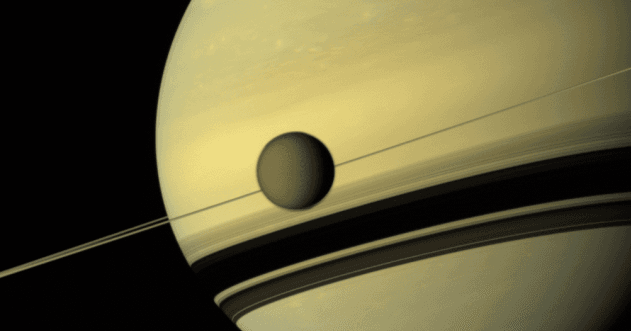The universe is a vast, mysterious place, constantly teasing us with puzzles that seem out of reach. For centuries, astronomers and stargazers have looked up, wondering about strange lights, odd behaviors, and signals from the deep. But guess what? Thanks to brilliant minds and ever-advancing technology, many of these cosmic conundrums are finally being cracked! Get ready to dive into ten such space mysteries that have spilled their secrets, proving that even the grandest enigmas can be solved.
10. Antarctica’s Missing Iron Meteorites
Did you know Antarctica is a hotspot for finding meteorites? It’s not that more fall there, but the dark space rocks are super easy to spot against the white, snowy landscape. However, for a long time, scientists were puzzled: where were all the iron meteorites? They found plenty of rocky ones, but the iron-rich types seemed to be missing.
This mystery bugged researchers for decades until a 2016 study shed light on the issue. It turns out Antarctica likely has loads of iron meteorites, but they’re just playing hide-and-seek. Because of their iron content, these meteorites get much hotter than stony ones when they blaze through our atmosphere. So, when they land on the ice, they don’t just sit there; they effectively melt their way down, burrowing under the surface and disappearing from view. Clever, right?
9. Why No Green Comet Tails?
Comets are famous for their beautiful tails, but have you ever seen one with a green tail? Probably not! Astronomers noticed that many comets develop a vibrant green glow around their heads as they get closer to the Sun. So, why doesn’t this pretty green color extend into their tails? This question had stumped scientists for about 90 years!
The prime suspect was a chemical called dicarbon. When organic matter on the comet’s head interacts with sunlight, dicarbon forms, creating that green hue. The theory was that sunlight also destroys dicarbon, meaning it wouldn’t last long enough to color the tail. In 2021, scientists finally proved this in a lab by creating dicarbon (which is tricky stuff, usually only found in extreme environments like space) and zapping it with lasers inside a vacuum chamber to mimic space conditions. Sure enough, the simulated sunlight broke down the dicarbon, explaining the mystery of the missing green tails.
8. The Curious Case of Jovian Lightning
Jupiter, the giant of our solar system, is known for its dramatic storms. For centuries, people suspected it had lightning, and in 1979, NASA’s Voyager 1 spacecraft confirmed it. But there was a twist: Jupiter’s lightning mostly happened near its poles, not around its equator like on Earth. Why the difference?
It took another mission, the Juno spacecraft, to figure this one out. The key is heat. On Earth, the Sun warms our equator the most, causing warm, moist air to rise, which is perfect for creating lightning. On Jupiter, it’s a bit different. Sunlight does warm Jupiter’s equator, but this warmth stabilizes the upper atmosphere there, stopping warm air from rising. So, no equatorial lightning storms! At Jupiter’s poles, however, heat rising from the planet’s interior creates the instability needed for those spectacular lightning shows.
7. A Strange Celestial Light Show
In 2022, the James Webb Space Telescope sent back a truly mind-boggling image. It showed a bright light at the center of several perfect rings, with eight light spikes radiating outwards, like a cosmic spiderweb. Social media went wild, with everyone wondering what on Earth (or off it!) they were seeing.
Scientists quickly figured out that the pointy spikes weren’t actually part of the celestial object; they were an optical effect, or a “fault,” created by the telescope itself when it photographs very bright things. So, what about those unusual concentric rings? A closer look revealed that the “light” actually came from a pair of stars. These two stars orbit each other every eight years. Each time they swing close and then move apart, they puff out a shell of dust, creating another beautiful, glowing ring.
6. The Enormous Glowing Blobs
Back in 2000, astronomers found something truly bizarre: a giant blob floating billions of light-years away. This blob was as big as a galaxy and shone just as brightly. The weird part? It seemed to be made only of hydrogen gas, with no stars to explain its brilliant glow. What was lighting it up?
Eventually, about 30 of these “Lyman-alpha blobs” were discovered. It took a massive effort from many astronomers, using countless telescopes and complex computer simulations, to uncover their secret. Surprisingly, stars were involved, but in a unique way. These giant orbs are actually colossal star nurseries! Deep inside them, new stars are forming at a furious pace—about 100 times faster than in our own Milky Way galaxy. The dazzling light comes from the moment these new stars ignite, releasing bursts of bright ultraviolet light which then scatters through the surrounding hydrogen gas, making the whole blob glow.
5. Solving a 900-Year-Old Star Mystery
Imagine looking up at the night sky and seeing a new star appear! That’s what happened in 1181, when Japanese and Chinese astronomers recorded a bright new light. It shone as brilliantly as Saturn and remained visible for six long months. Modern scientists believed these ancient sky-watchers were describing a supernova—a massive star explosion.
This event became famous, mostly because no one could find any clear leftovers of this explosion for centuries. But in 2021, almost 900 years later, the mystery of the “Chinese Guest Star” was solved. Ancient records pinpointed the light between two Chinese constellations. In this very region, researchers found a star and a surrounding nebula (a cloud of gas and dust) believed to have formed when two White Dwarf stars merged. Such an event is known to cause a type of supernova. The location, the description of the light, and the age of the nebula all matched the 1181 event perfectly!
4. The Day Betelgeuse Blinked
If you’re a fan of stargazing, you’ve probably heard of Orion, “the hunter.” Betelgeuse is the bright red supergiant star that marks Orion’s eastern shoulder. It’s one of the shiniest stars in our night sky. So, when it suddenly started to dim in September 2019, astronomers took notice. The fading continued, and by February 2020, Betelgeuse had lost an incredible 35 percent of its usual brightness!
The star eventually returned to its normal brilliance, but scientists were baffled. Why did this giant star “blink”? Theories included a giant dust cloud or a sudden drop in its surface temperature. After sifting through data from observatories and satellite images, a multinational team realized both ideas were partly correct. Betelgeuse had actually belched out a massive cloud of gas from its interior. Then, as the star’s surface cooled slightly, this gas condensed into dust, creating a temporary dusty veil that dimmed its light.
3. The Photograph of a Lunar Fireball
In 1953, an amateur astronomer named Dr. Leon Stuart from Oklahoma took a photograph of what he believed was a massive fireball on the Moon. He thought it was a plume of vaporized rock from a meteorite impact. If he was right, he’d be the first person to ever document such an event. It became known as “Stuart’s Event.” The catch? For decades, no one, not even astronauts or space probes, could find the crater.
Still, the photo was compelling. In 2003, NASA researchers took another look. They calculated that such an impact would have left a fresh-looking crater up to 1.24 miles (2 kilometers) across. Using detailed photos taken in 1994 by the Clementine spacecraft orbiting the Moon, they searched a specific area. Amazingly, they found it! The crater was a bit smaller, about 0.93 miles (1.5 kilometers) wide, but it looked fresh, matched the appearance, and was right in the middle of where Stuart’s photo indicated. The impact would have been about 35 times more powerful than the Hiroshima atomic bomb!
2. The Impossible Twin Galaxies
One rule in astronomy is that no two galaxies are exactly alike, much like snowflakes. So, imagine the surprise when, in 2013, scientists discovered what looked like identical twin galaxies sitting right next to each other! This cosmic puzzle became known as Hamilton’s Object, and it had astronomers scratching their heads.
No ordinary explanation made sense until 2015, when someone suggested gravitational lensing. This is a truly mind-bending phenomenon. When a really massive object, like a galaxy cluster, sits between us and a more distant object, its gravity can bend light and space-time. This bending can make the distant object appear closer, or even create multiple images or mirages of it. And that’s exactly what was happening! Researchers found a massive cluster of galaxies located between Earth and Hamilton’s Object. This cluster was creating a cosmic illusion, making one single spiral galaxy appear as two identical twins.
1. Unmasking the Famous Wow! Signal
Perhaps one of the most legendary space mysteries is the “Wow! Signal.” In 1977, astronomer Jerry Ehman detected an incredibly strong and unusual radio wave from space. It was so unique that he famously wrote “Wow!” next to the data printout. For decades, this signal fueled speculation about alien contact or, at the very least, remained a profound unsolved mystery. But the truth, revealed in 2017, is a bit more down-to-earth—or rather, down-to-comet!
Researchers suspected that comets might be the source. Specifically, they looked at two comets, 266P/Christensen and 335P/Gibbs. Both of these comets are enveloped in large clouds of hydrogen gas. This is key because hydrogen naturally emits radio waves at a frequency of 1420MHz—the exact same frequency as the Wow! Signal. When the signal was detected, the telescope was pointing at a group of stars in the Sagittarius constellation, and it turns out both comets were passing through that exact patch of sky at that time. Further analysis suggested that comet 266P/Christensen was the most likely culprit, its radio emissions perfectly matching the 40-year-old signal.
Isn’t it amazing how science can peel back the layers of these cosmic onions? Each solved mystery not only gives us answers but also opens up new questions and deepens our appreciation for the incredible universe we live in. The pursuit of knowledge is an endless adventure!
Which of these solved space mysteries blows your mind the most? Or is there another cosmic puzzle you’d love to see cracked? Share your thoughts in the comments below!










